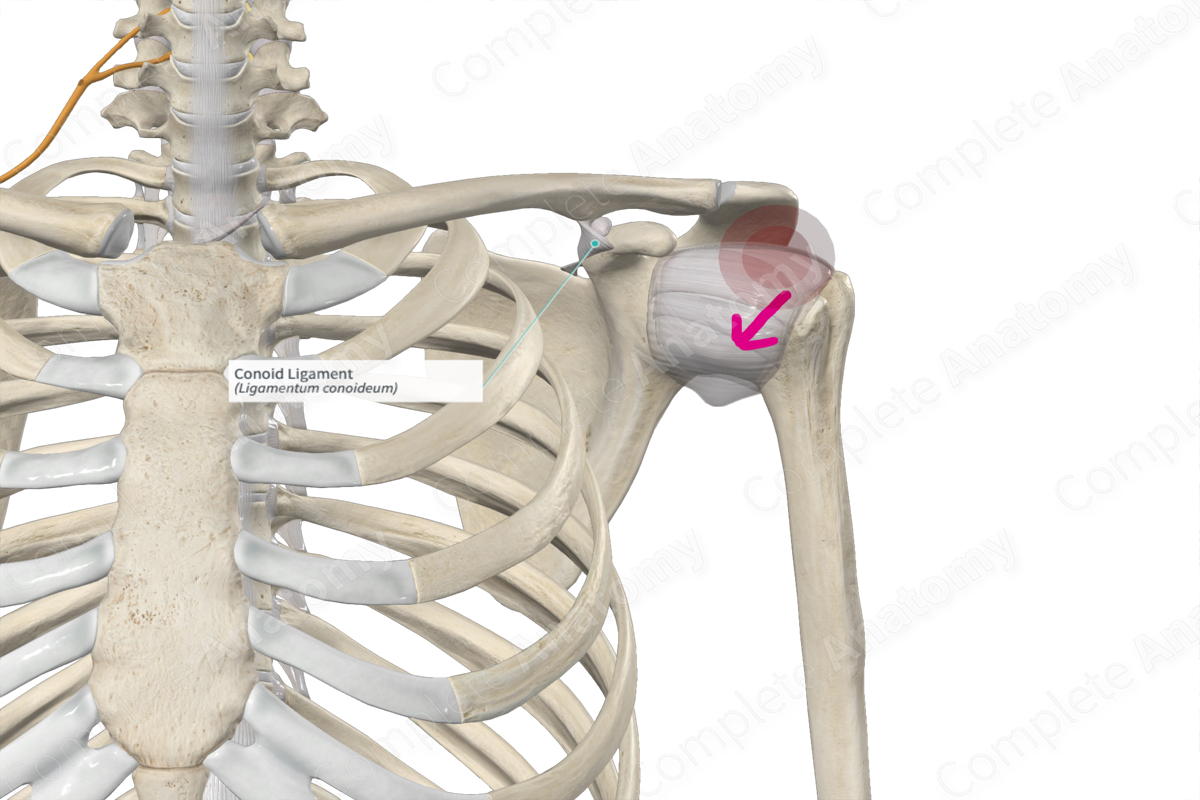
Anatomical Relations
The conoid ligament is one of two parts (along with the trapezoid ligament) that forms the coracoclavicular ligament.
Related parts of the anatomy
Structure
As its name suggests, the conoid ligament is triangular or cone-shaped and forms the medial part of the coracoclavicular ligament. It has a broad base that attaches to the conoid tubercle of the clavicle, and narrower apex, which attaches to the upper surface of the coracoid process of the scapula, lateral to the scapular notch.
It has a free anterior border, while its posterior border is joined with the coronoid ligament.
Function
As a rule, triangular or cone-shaped ligaments keep structures in close apposition, and therefore, the conoid ligament keeps the coracoid process of the scapula and the clavicle in close apposition.
Learn more about this topic from other Elsevier products
Coracoid Process

The rotator interval is an anatomically defined triangular area located between the coracoid process, the superior aspect of the subscapularis, and the anterior aspect of the supraspinatus.



